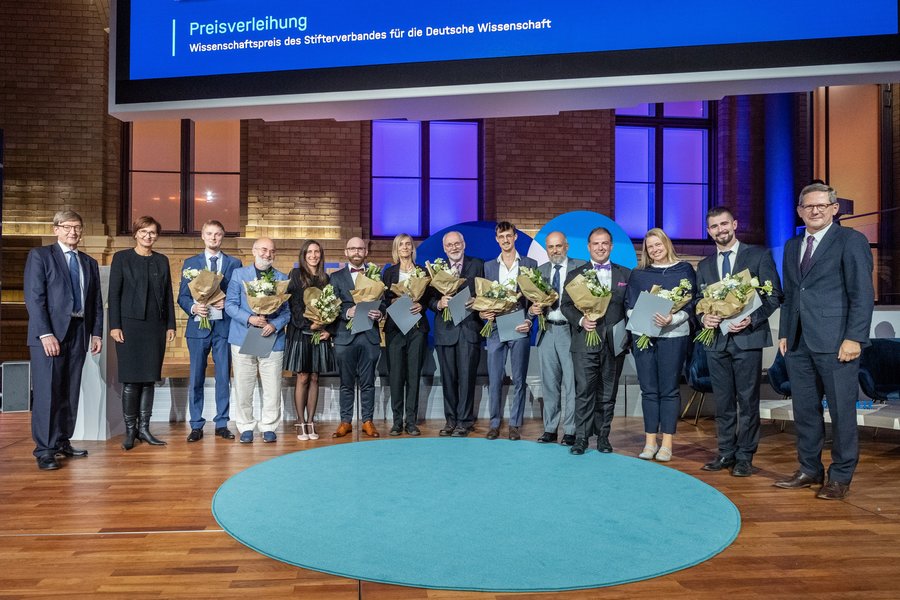International team at HIM awarded “Erwin Schrödinger Prize — Science Award of the Stifterverband”
Interdisciplinary approach significantly improves analysis in magnetic resonance imaging for medicine and research
04.10.2022 |
This news is based on a press release of the Johannes Gutenberg University Mainz.
An international team at the Helmholtz Institute Mainz (HIM), a branch of the GSI Helmholtzzentrum in cooperation with the Johannes Gutenberg University Mainz (JGU), has received the “Erwin Schrödinger Prize — Science Award of the Stifterverband” of the year 2021 for important advances in the field of magnetic resonance imaging (MRI). The award ceremony took place during the Helmholtz Annual Meeting in Berlin. “The Science Award of the Stifterverband rewards scientifically or technically innovative achievements that have been made in frontier areas between different subjects of medicine, natural sciences and engineering. This curiosity and the will to join forces across borders also characterize our award winners today," said Professor Michael Kaschke, President of the Stifterverband, in his laudatory speech. The award ceremony was originally scheduled to take place in December 2021, but was postponed due to the Corona situation.
Professor Paolo Giubellino, Scientific Managing Director of GSI and FAIR, was also pleased about the scientists’ recognition: “The Helmholtz Institute Mainz offers the researchers in this interdisciplinary collaboration an environment to enable top performance. The results of this outstanding research team demonstrate the overriding importance of close global networking in the scientific community. I am therefore delighted that this great scientific achievement has been honored with the Erwin Schrödinger Prize.”
The group led by Professor Dmitry Budker, professor of Experimental Atomic Physics at JGU and Section Head at HIM, developed a technique to improve hyperpolarized magnetic resonance imaging. The new technique for observing metabolic processes in the body promises to be much cheaper and simpler than previous methods. MRI, or magnetic resonance imaging, has become a standard method for medical examinations in recent decades. It can be used to examine soft tissues of the body such as the brain, intervertebral discs or even the formation of tumors.
The Erwin Schrödinger Prize 2021 went in detail to Dmitry Budker (physicist, HIM), James Eills (chemist, HIM), John Blanchard (chemist, HIM), Danila Barskiy (physical chemist, HIM), Kerstin Münnemann (chemist, University of Kaiserslautern), Francesca Reineri (chemist, University of Turin), Eleonora Cavallari (pharmaceutical and biomolecular scientist, University of Turin), Silvio Aime (biological scientist, University of Turin), Gerd Buntkowsky (physical chemist, TU Darmstadt), Stephan Knecht (physicist, TU Darmstadt and NVision, Ulm), Malcolm H. Levitt (chemist, University of Southampton) and Laurynas Dagys (chemist, University of Southampton). The prize is endowed with a total of 50,000 euros.
The Helmholtz Institute Mainz was founded in 2009 by GSI and JGU to further strengthen the long-standing cooperation between the two institutions. At its location in Mainz, HIM addresses questions concerning the structure, symmetry and stability of matter and antimatter in experimental and theoretical investigations. Basic funding is provided by the federal government and the state of Rhineland-Palatinate. The JGU supports HIM by providing infrastructure. (CP)














